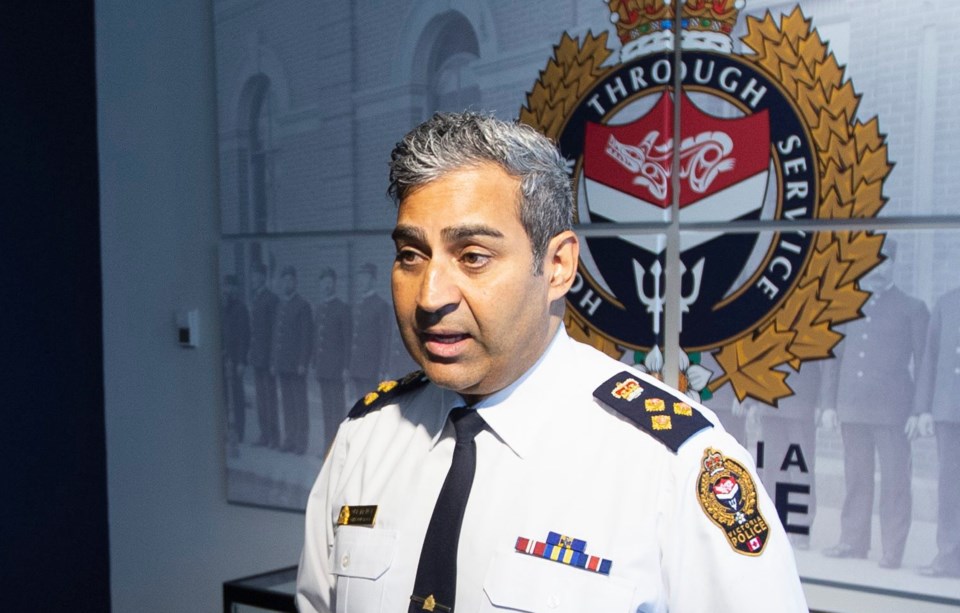The past couple of years has seen a prolonged, often rancorous debate, on the role of policing in our community and how much funding is needed. It’s a complicated and costly issue given our fractured regional governance that includes five police forces.
After rejecting a proposed Victoria Police Department budget twice this year, council likely faces another shortfall in 2020.
The Employer Health Tax, a recent ruling by the provincial director of police services that expands the police mandate, diminishing reserves and overtime wages will all continue to pressure budgets.
Taxpayers have made it crystal clear to councils: They want quality, but affordable, police services.
There are savings through line-by-line budgeting. In July, the Victoria and Esquimalt Police Board finance committee will get an early jump on the 2020 budget when they meet with councillors to identify priorities.
Detailed budget information will allow for that line-by-line analysis at the start of the process. Overtime costs, in particular, should be scrutinized.
But, it’s going to take more action than that to moderate escalating policing costs.
There are questions about non-deployable officers. During the last couple of years, discussion has focused around a shortage of front-line officers in Saanich and especially Victoria.
About 35 of the 249 sworn VicPD officers are considered non-deployable for front-line duties. Non-deployable is based on short-term and long-term injuries occurring on the job, off-duty injuries, occupational stress injuries, maternity leave and recruits in training at the Police Academy.
Occupational stress issues have increased dramatically following changes at WorkSafe B.C. A total of 539 shifts were lost in 2018, up from just 31 in 2017. That worrisome trend is continuing this year.
The non-deployable issue makes administration and overtime costs especially challenging when holiday absences, illness and court duties are also factored in.
When 15 per cent of a line staff are unavailable for work, innovative solutions beyond pricey overtime must be found. Taxpayers want to know the overtime costs at both police departments and if is there a strategy in place.
There are ways to ease peak workloads.
Surrey’s fire chief is the latest emergency services official to call for staggered distribution of provincial welfare cheques. He recently co-authored a report that explores links between opiate drug overdoes, crime and income assistance.
The B.C. Coroners Service found that in the five days following “Welfare Wednesday” near the end of each month, there’s a 60 per cent increase in overdoses. When money runs out, addicts turn to minor offences to support their habit. The B.C. Centre on Substance Abuse is studying the issue and is expected to report soon to the province.
It’s time the province moved on this issue, which is a solution recommended by urban police forces for many years. It’s a policy change that could lead to a decrease in overdoses and property crime and it could distribute the peak workload, especially at VicPD.
There are cost savings with two-tiered policing.
Scott Green of Saanich, who takes office as chief constable Aug. 1, has raised the possibility of two-tiered policing. This strategy mixes regular police officers with other types, such as officers with limited powers, special constables, civilians and community partners.
Two-tier policing, using Vancouver as a model, should be a priority for Saanich and Victoria.
There’s also a need to study the idea of a regional police force.
It’s the third priority in Victoria’s 2019-22 strategic plan that has about 180 items, including those that are police-related. “Work to regionalize police services and consider the possibility of a single, amalgamated police service.”
Unfortunately, despite support from Victoria Police Chief Del Manak and council, little has been done to move on this priority.
Outgoing Saanich Chief Bob Downie has reservations regarding the idea, but concedes there is some merit. “There is strong potential that a regional strategy would provide opportunities to constrain future costs by reducing duplication of resources, and ensuring new services are ‘right-sized’ for the region,” he said in his 2019 budget.
With a new Saanich police chief and deputy chief, it’s an ideal time to explore regionalizing police forces, or at the very least, to look at such things as a common regional detention facility and joint procurement.
As policing costs outpace inflation and consume more municipal budget, police boards, councils and police chiefs at Victoria and Saanich must start thinking outside the box.
Stan Bartlett is a retired criminologist and chairman of Grumpy Taxpayer$ of Greater Victoria, a non-partisan advocacy group dedicated to better value for taxes. Bruce Kennedy is a retired municipal police officer and board member.



